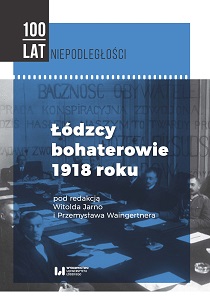
We kindly inform you that, as long as the subject affiliation of our 300.000+ articles is in progress, you might get unsufficient or no results on your third level or second level search. In this case, please broaden your search criteria.


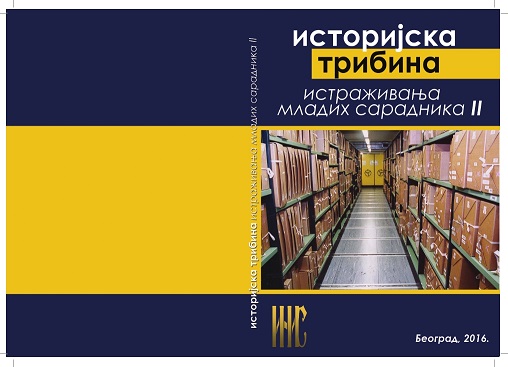
The period between 1948 and 1952 is a very important stage in the political development of Milovan Đilas. At that time Đilas launched his ideological and political criticism of USSR and Stalin. His criticism was primarily aimed at the emergence of bureaucratic socialism in the USSR and at Stalin’s imperialist policy. The two party congresses of the Yugoslav communists have marked this period. It could be divided in three parts. The first part, from the Fifth Congress of the CPY (1948) to the Third Plenary Session of the Central Committee of the CPY (December, 1949); the second part, from the Third Plenary Session to the Fourth Plenary Session (June, 1951) and the third part, from the Fourth Plenary Session to the Sixth Congress of the CPY (November, 1952).
More...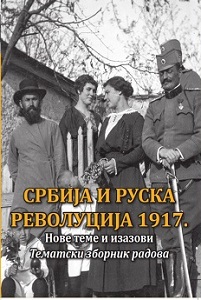
During his stay in Russia, from September 1917 to the end of 1918, Miloš Moskovljević was able to directly observe and analyse the situation on the eve of the October revolution and the following events until the end of October 1917. He wrote down his observations, reflections and comments in a diary which became an interesting historical source for analysing the events that deeply shocked the world. Being a direct and well-informed eyewitness, Moskovljević described the changes happening almost every day and even every hour in his diary. However, until the end of October, 1917, he “doubted” the revolution victory. He tried to minimize the success of the Bolsheviks emphasizing that they were convinced they “couldn’t do anything by themselves”, and that they would “happily agree to bloc with all socialist parties.” Only when the Bolsheviks managed to disperse the Constituent Assembly on January 5, 1918, Moskovljević was forced to state that “they felt stronger than ever.” That is why he expected their “irreconcilable behaviour at the negotiations in Brest-Litovsk” and thought that “they would never agree to a shameful peace with Germany.” But on January 14, at the Congress of Soviets, Trotsky, who had previously advocated a “holy war,” stated that “if it was necessary to conclude peace, it would be a misfortune, not a crime.” This made Moskovljević realize that separate peace was inevitable.
More...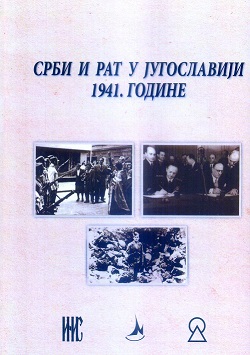
This article is an attempt at tracing the early ideological influences of Dimitrije Ljotić, founder and leader of the ZBOR party (1935–1940), and a leading ideologue of the collaborationist Government of National Salvation (1941–1944) under General Milan Nedić. This article will highlight the complexity and heterogeneity not only of Ljotić’s formative personal ideological development, but also the ideological precursors of his ideological synthesis in a wider European context.
More...
Ideological and political split in Slovenia escalated during the second half of 1930s. Traditional political formations started falling to pieces. Bourgeois parties, including the Slovenian People’s Party lost political clout in late 1930s. They were not able to find the answers to the crisis and the war in Europe. Most Slovenian politicians believed in preservation of Yugoslavia but they looked in vain for an alternative solution in case of occupation. Eventually, this would lead them either to collaboration or to emigration. As an opposition to the defeatist policy of the bourgeois camp, a new political block under the leadership of the Communist Party emerged.
More...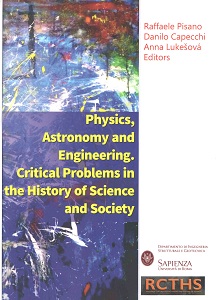
According to Aristotle, Anaximander of Miletus explained the motionless position of the Earth in the universe by appealing to the principle of equilibrium. This study shows that such a conception would have represented a radical departure from the Ionian tradition, which tended to stress the role of air in supporting the Earth. Moreover, given the cosmological role of air, it is possible that this element played the same role also in Anaximander’s thought. Aristotle’s argument is in fact most likely based on Anaximander’s notion of concentric circles of heavenly bodies around the Earth.
More...
That ‘s Gravesande (1688–1742) did not follow Newton’s doctrines ad literam has been frequently observed in the literature. Yet, despite such mitigation of ‘s Gravesande’s Newtonianism, it has frequently been maintained that he was an advocate of Newton’s methodology. Here I shall argue that, although ‘s Gravesande took over key terms of Newton’s methodological canon, upon close scrutiny, his methodological views were quite different from and occasionally even incongruent with Newton’s views on the matter.
More...
In 1920s the failure of the old quantum theory by Niels Bohr (1885–1962) and Arnold Sommerfeld (1868–1851) to describe successfully two–electron atoms triggered (at least in part) the development of quantum mechanics. Indeed, once the basic formalism had been established by Werner Heisenberg (1902-1976) and Erwin Schrodinger (1887–1961), early variational calculations produced remarkably good results for the ground state of the helium atom, thus opening the way to a wide acceptance of quantum mechanics. In this paper we present several, related, unpublished results obtained almost simultaneously by Ettore Majorana (1906–1938?), which were derived by resorting to novel methods not yet appeared in the literature.
More...
We shall here review some of the insights about the structures of geometry of spacetime implied by gravitational physics. In the early 70s Jürgen Ehlers (1929–2008), Felix A. E. Pirani and Alfred Schild (1921–1977) proposed an interpretational framework for relativistic theories, which suggests to revise thestructure of gravitational theories. We shall review a proposal for classifying extended theories of gravitation and consider some examples and applications.
More...
It is known that Einstein's conceptual base for his theory of relativity was the philosophy formulated by Immanuel Kant. Things appear differently to observers in different frames. However, Kant's Ding–an–Sich leads to the existence of the absolute reference frame which is not acceptable in Einstein's theory. It is possible to avoid this conflict using the ancient Chinese philosophy of Taoism where two different views can co–exist in harmony. This is not enough to explain Einstein's discovery of the mass–energy relation. The energy–momentum relations for slow and ultra–fast particles take different forms. Einstein was able tosynthesize these two formulas to create his energy–mass relation. Indeed, this is what Hegelianism is about in physics. Isaac Newton synthesized open orbits for comets and closed orbits for planets to create his second law of motion. Maxwell combined electricity and magnetism to create his four equations to the present–day wireless world. In order to synthesize wave and particle views of matter, Heisenberg formulated his uncertainty principle. Relativity and Quantum mechanics are the two greatest theories formulated in the 20th Century. Efforts to synthesize these two theories are discussed in detail.
More...
In this paper, we are mainly concerned with the contributions of French engineers, mainly Lazare Carnot (1753–1823) general theory of machines, and Gaspard–Gustave de Coriolis (1792–1843) who wrote the first textbook on applied mechanics: Du calcul de l’effet des machines (1829). These two books have in common the use of the concept of work as a fundamental step to build a general theory of applied mechanics within the framework of Rational Mechanics. Carnot started to develop his theory of machines applying d’Alembert (1717–1783) principle. Coriolis, in his book, develops Lazare Carnot’s project and uses extensively the concept of work associated to the new mathematical formalism.
More...
The objective of this paper is to analyse some drawings relating to the artistic techniques in the first volume of the Diderot’s Encyclopaedia (1751). The Encyclopaedia is still now considered the laic bible of the century of the lights. It has been selected some of the most significant pictures concerning to drawing,painting, mosaic, sculpture and engraving, showing the rich interconnections between these different kinds of art and the drawing, from whom all of them was born.
More...![PLANCK’S “LONG AND MULTIPLY TWISTED [AND INCONCLUSIVE] PATH” TOWARDS A BLACK BODY THEORY](/api/image/getbookcoverimage?id=document_cover-page-image_943567.jpg)
Karl Ernst Ludwig Max Planck (1858–1947) suggested the quanta through a long series of calculations aimed at solving the problem of black–body radiation. These calculations are easily divided into six groups. It is shown that each group is disconnected from any other group. Planck’s successful results are justified as either lucky calculations or retrospective calculations from the Wien’s experimental law. Several scholars pointed out strong theoretical reasons for considering them insufficient to provide a correct notion of quanta of energy. By applying an operative definition of incommensurability, it is proved that they are insufficient because Planck ignored the mutual incommensurability in therelationship between the classical theories and the new theory.
More...
Ludwik Silberstein (1872–1948) was the Polish–American scientist who worked in many branches of physics, but he is remembered mainly due to his work in general relativity. We present the influence of Ludwik Silberstein when staying as libero docente (in Italy until 1970, private docentship) in Bologna and Rome Universities (1899–1904, 1904–1920 respectively) on his scientific development and further career.
More...
The works of Ktesibios, Philo and Hero show that the use of abstract principles for technical purposes had been widely practiced in the Alexandrian Museum and Library since the 3rd c. BC. This paper explores the political, religious and ideological issues of these practices, especially their relationship to the process of the divinisation of kings, which started during this period. The eminent role of applied science, which was perceived as an extension and a proof of the rulers’ divine power, explains why the transgression of the opposition between theoretical research and mechanics was overcome in the realm of court engineering.
More...
This study analyzes one of the first, and most important, installations of a lightning conductor system in Italy, applied to a monumental complex: the Abbey of Monte Cassino, in Southern Lazio. This study – in addition to a profile of the designer of the system, Feliciano Scarpellini (1762–1840) an astronomer and professor of physics, a leading scholar and scientific investigator in Italy during the late eighteenth and early nineteenth centuries, the founder, among other things, of the Accademia Caetani, which later became the Accademia dei Lincei – analyzes the relief and planar–altimetric arrangement of the lightning rods, which, together with other partially unpublished documents, provides several important measurements of the Abbey, which, completely destroyed by ferocious cimbat during the Second World War, left little graphic evidence that describes it geometrically. It also outlines the profiles of other scholars who contributed invarious ways to pre–war lightning–rod system installations.
More...
In this paper firstly I give a descriptive overview of the structure of Luigi Pirandello’s (1867–1936) novels in a ringkomposition. I subsequently replace the common knowledge of the ring with the one proposed by August Ferdinand Möbius (1790–1868). Finally and, as a result, we arrive to some seditious conclusions concerning what we thought to know about Pirandello’s heroes. Particularly I will show that they were directing away from self–reference or formal rules by rambling inside and outside the ordinary social topology. The interactions studied by physics are in the present paper fabricated in the five–dimensional space of literature which revaluates the modern conceptions of time, space and causality.
More...
The Count Paolo Ballada de Saint Robert (1815–1888) was an Italian scientist mainly busy in mechanics and thermodynamics. This paper describes the conclusions of Saint Robert concerning the retreat of glaciers and tries to explain his theory through modern knowledge.
More...
In this paper a new look upon Galileo’s Discorsi is proposed, a look based on the use of practical knowledge made in this major work. It is interesting to note that Galileo places the three interlocutors of the dialogue in an arsenal, and that this place determines the subject of the conversations they will have, especially of their conversation on the problem of the resistance of matter to fracture. The study of this problem in the Discorsi is related to significant practical consequences as well as to the work which is done in the arsenal. According to Salviati and Sagredo who open the dialogue, one can acquire knowledge in the area of mechanics by making use of the knowledge accumulated by the artisans who work in the arsenal. To be more precise, the total amount of the observations one can acquire in the arsenal does not contain just those gathered by the artisans themselves, but consists of a larger group of observations some of which come from their predecessors. Having in their minds the total amount of these observations, some artisans of the arsenal are according to Salviati well equipped in order to develop their own thoughts by using their own reason.
More...